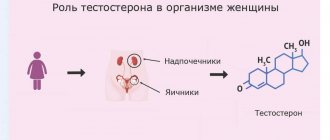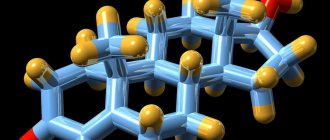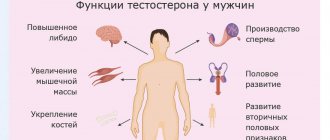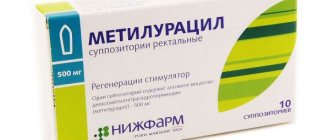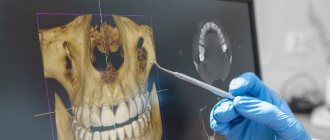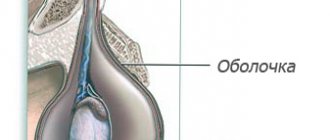Testosterone is an androgen (a steroidal male sex hormone) that is produced in small quantities in a woman’s body. It takes part in the regulation of metabolism and affects reproductive function.
Physiological changes in testosterone concentration are observed during puberty, pregnancy and menopause. Pathological causes of hormonal imbalance are severe damage to organs and systems, diseases of the endocrine glands, and tumor formations.
One of the most common female hormonal problems is an increase in testosterone levels in the body. The official name of the disease is hyperandrogenism.
Testosterone hormone levels play an important role in a woman's health. Deviation from the norm of this indicator should be a signal for immediate action.
Optimal testosterone hormone levels
There are two types of this substance - free and common.
- Free testosterone hormone is the concentration of a substance not associated with sex hormones and proteins.
- Total testosterone is a total indicator of the concentration of a substance that is free and bound to hormones and proteins.
The normal level of total testosterone hormone is from 0.26 to 1.3 ng/ml. The concentration of the free component depends on the woman’s age:
- Before age 39, levels should be between 0.13 and 3.09 ng/L.
- In women over 40 to 59 years old - from 0.13 to 2.6 ng/l.
- In women over 60 years of age, from 0.13 to 1.8 ng/l.
The production of the substance may vary depending on the time of day and the phase of the menstrual cycle.
Preparation for the procedure
Like any planned study, a blood test for testosterone should be carried out outside of acute viral and bacterial diseases, no earlier than two weeks after recovery.
Taking certain medications may affect test results; It is necessary to discuss with your doctor the list of medications used, and perhaps discontinue some of them in consultation with your doctor.
Blood collection should be done in the morning on an empty stomach, after 8-14 hours of overnight fasting. Drinking water is allowed. On the eve of the study, it is recommended to exclude significant physical and emotional stress and alcohol consumption. It is not recommended to smoke at least one hour before the test.
For women, the test is usually carried out 2-4 days after the start of menstruation, unless other conditions are recommended by the attending physician.
Decreased testosterone levels
Low concentrations of the hormone can cause low sexual desire, decreased muscle tissue and increased fat, dry skin, as well as apathy and depression.
If the production of testosterone and estrogen decreases at the same time, the production of lubricant during sexual intercourse stops, and therefore the woman experiences severe pain.
The main reason for low concentrations of the hormone testosterone in women is menstrual irregularities. This can lead to serious consequences, so this condition should not be ignored.
Insufficient testosterone production can also be caused by diseases of the endocrine system, insufficient physical activity, weak immunity, and vitamin deficiency.
To prevent hormonal disorders, experts recommend leading a full sex life, eating a balanced diet, and avoiding stress and emotional stress. In case of low testosterone levels, you should definitely consult a doctor who will prescribe corrective treatment.
The role of testosterone in a woman's body
Many people believe that testosterone is produced only in the male body. In fact, this is not at all the case and the hormone is found in a certain amount normally in the body of women, performing a number of functions. Why is it needed and what is the role of testosterone in a woman’s body?
Among the main functions and hormones in the female body are:
- Helps maintain normal muscle development
- helps strengthen bone tissue
- helps strengthen teeth
- supports sexual activity and is aimed at reproduction
- takes part in the development of hair follicles, controls the growth of body hair
- controls the functioning of the nervous system
- regulates the production of adipose tissue and maintains its level in the body
- participates in the metabolic process
- regulates water-salt metabolism
- prevents the development of diseases of the circulatory system
- Helps the body resist stress.
High concentration of testosterone
Excessive production of the hormone testosterone in women can be triggered by poor nutrition, too intense activity of the adrenal glands, or a hereditary predisposition.
The following symptoms may indicate an increased level of the hormone: male-pattern hair growth, changes in figure and voice, dry skin, hair loss, irritability, aggressiveness.
In the future, high levels of the hormone can cause the development of hyperandrogenism, menstrual irregularities, ovarian tumor formation and infertility. Therefore, if you have symptoms that indicate excessive testosterone production, you should definitely consult a doctor. Diagnostics and surgical treatment will help stabilize hormonal levels and protect against possible complications.
To the beginning of the section:: » Female hormones
Free testosterone is a biologically active fraction of the steroid sex hormone testosterone, not bound to blood proteins.
Synonyms Russian
Testosterone is direct.
English synonyms
Testosterone Free, Testosterone Direct, Unbound Testosterone.
Research method
Enzyme-linked immunosorbent assay (ELISA).
Units
Pg/ml (picograms per milliliter).
What biomaterial can be used for research?
Venous blood.
How to properly prepare for research?
- Do not eat for 12 hours before the test.
- Avoid taking estrogens and androgens 48 hours before the test.
- In the absence of special instructions from the doctor, it is recommended to donate blood for analysis before 11 a.m.
- Avoid physical and emotional stress 30 minutes before the test.
- Do not smoke for 30 minutes before the test.
General information about the study
Testosterone is a steroid hormone from the group of androgens (male sex hormones). In men, it is produced by Leydig cells in the testes and in small quantities in the adrenal cortex, in women - in the ovaries and adrenal glands. The main functions of testosterone are to control the proper development of the male genital organs, increase the volume of skeletal muscles, stimulate spermatogenesis, hair growth on the skin of the face, armpits, and pubis. The secretion of the hormone changes with age - it increases until the age of 30, and after 50 it begins to decrease. There are also daily fluctuations in testosterone: a peak between 4 and 8 a.m. and a minimum between 4 and 8 p.m.
With excessive production of androgens in women, virilization (secondary sexual characteristics characteristic of men), hirsutism (excessive male-type hair growth), deepening of the voice, and clitoral hypertrophy occur. Since testosterone stimulates the function of the sebaceous glands, its increase is often associated with the development of acne. Reduced testosterone synthesis in men leads to hypogonadism (underdevelopment of the gonads), female-type hair growth, poor development of skeletal muscles, underdevelopment of the external genitalia, infertility, enlarged mammary glands, and obesity. Insufficient production of this androgen in older men increases the risk of osteoporosis.
Total blood testosterone is divided into 3 types: free testosterone (not bound to protein, 1-4% of the total), testosterone bound to sex hormone-binding globulin (60-70%), and testosterone bound to albumin (weakly bound testosterone, 25-40%). Free and weakly bound forms are bioavailable testosterone, that is, it has biological activity. Bound testosterone, in turn, is not active.
Free testosterone levels are not affected by changes in sex hormone binding globulin (SHBG) concentrations. Therefore, if SHBG is increased (with hyperthyroidism, cirrhosis, taking oral contraceptives and antiepileptic drugs, hyperestrogenic conditions, including pregnancy) or decreased (with hypothyroidism, obesity, excess androgens, nephritic syndrome), a test for free testosterone will be more informative than to general.
What is the research used for?
- To identify the causes of early puberty or delayed puberty in boys.
- To identify the causes of impotence and infertility in men.
- For the diagnosis of testosterone-producing tumors of the gonads.
- To identify polycystic ovary syndrome and other causes of virilization in women.
- To monitor treatment of prostate cancer with GnRH analogues and antiandrogens.
- To identify the causes of acne.
- For the diagnosis of hypothalamic-pituitary disorders, assessment of the function of the body’s endocrine system.
- To clarify the gender of newborns with ambiguous gender characteristics.
When is the study scheduled?
- For men: with delayed development of secondary sexual characteristics or early puberty,
- with decreased libido and sexual functions, impotence,
- if hypogonadism is suspected,
- in case of infertility,
- with andropause (“male menopause”),
- with severe acne,
- for osteoporosis.
- with an irregular menstrual cycle or absence of menstruation,
What do the results mean?
Reference values
For Free Testosterone Test System (CAN-fTE-260), Diagnostics Biochem Canada Inc.:
| Gender, age | Free testosterone, pg/ml |
| Male, 20-40 years old | 9,1 — 32,2 |
| Male, 40-60 years old | 5,7 — 30,7 |
| Male, > 60 years | 5,9 — 27 |
| Female, 20-60 years old | 0,1 — 6,3 |
| Female, > 60 years | 0,5 — 3,9 |
Reasons for increasing free testosterone levels
For men:
- tumors of the testicles and adrenal glands,
- congenital hyperplasia and dysfunction of the adrenal cortex (accompanies deficiency of 21- or 11-hydroxylase enzymes),
- early puberty in boys,
- Itsenko-Cushing syndrome,
- Reifenstein syndrome.
Among women:
- polycystic ovary syndrome,
- tumor of the ovaries, endometrium and adrenal glands,
- adrenogenital syndrome (congenital hyperplasia of the adrenal cortex),
- Itsenko-Cushing syndrome.
Reasons for decreased free testosterone levels
For men:
- genetic disorders of sexual development and testosterone production (Klinefelter syndrome, Prader-Willi syndrome),
- pathology of the hypothalamic-pituitary system associated with the production of luteinizing hormone,
- testicular pathology (cryptorchidism, myotonic dystrophy),
- acquired pathology of the gonads (due to testicular trauma, viral mumps, radiation injury or the toxic effects of ethanol in alcoholism),
- taking gonadoliberin analogues or antiandrogens,
- elderly age.
In women, a decrease in free testosterone is not taken into account in clinical practice.
What can influence the result?
- Drugs that increase testosterone levels: anticonvulsants, barbiturates, bromocriptine, clomiphene, danazol, estrogens, minoxidil, pravastatin, rifampicin, tamoxifen, bicalutamide, casodex, cimetidine, finasteride, Lupron, nilutamide, anabolic steroids, goserelin, levonorgestrel, nafarelin, naloxone , mifepristone, oral contraceptives, phenytoin, valproic acid.
- Drugs that lower testosterone levels: antiandrogens, carbamazepine, corticosteroids, cyclophosphamide, digoxin, estradiol valerate, follicle-stimulating hormone, finasteride, gemfibrozil, interleukin, ketoconazole, leuprolide, magnesium, narcotic drugs, nafarelin, stanozolol, spironolactone, tetracycline, verapami l, cyproterone, diethylstilbestrol, glucose, ethanol, halothane, metoprolol, metyrapone, phenothiazides.
- After physical exercise, testosterone levels in the blood increase.
